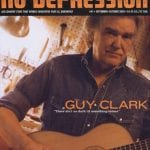Roscoe Holcomb – Stranger in a strange land
In the summer of 1962, my cousin Mike Sigel and I drove south to visit several mountain musicians I had met at the festivals, including Roscoe. Although the practical purpose of this trip was to meet Virginia banjo player Hobart Smith and invite him to next year’s festival, the real reason was to soak up as much of the music, people, and culture of the southern mountains as we could. In looking back at the whole experience, it gave me more than I ever could have imagined.
John Cohen was spending the summer in Roscoe’s hometown of Daisy while working on his documentary film about eastern Kentucky, The High Lonesome Sound. John’s assistant, Joel Agee, was the son of the writer and film critic James Agee, who in 1936 had traveled to the Alabama cotton country with photographer Walker Evans and wrote the book Let Us Now Praise Famous Men, about a group of white sharecropping cotton farmers and their families. Although Joel had spent very little time with his father, he was repeating his father’s experience by working on this project.
We traveled through the hills of western North Carolina and Virginia, where the farmland was so deeply green that I thought that I might be in Ireland. Kentucky was another story altogether. It was tough country.
We had the radio on when we drove north from Virginia, and when we came down a mountainside crossing the border into Kentucky, our radio immediately picked up another station playing a very gritty sounding rockabilly song that fit right in with the change of terrain. We started seeing bulletholes in the road signs.
A holler is a small valley between short, steep ridges; it has the appearance and feel of a rural alleyway. The roads were dusty in the summer heat, and there was so little flat land that the houses were often jammed into the narrow space between the road and the steep grade of the hillsides. The soil seemed unable to support trees larger than secondary growth.
That was not how it had always been. Before the 20th century, great stands of hardwood trees such as white oak, poplar and beech had grown up to 175 feet high and seven or eight feet in diameter. There had been nothing wrong with the soil at all.
A few years after the Civil War, the mountain farmers were persuaded to sell off the logging rights of those forests for a tiny fraction of their true value. By the Second World War, there was nothing left but the second-growth timber we saw that summer.
But that was not all. As farmers had tilled the hillsides above the worn out flatland, there was no longer even secondary growth to protect the topsoil from erosion by the winter and spring rains. The rains naturally washed away that soil at an ever-increasing rate as steeper and steeper hillsides were farmed, creating the dust that collected on the roads.
It had become a hard place, had been a hard place for a long time. Frank Wilkeson, a Union soldier during the Civil War, described conditions caused by battles between Union and Confederate sympathizers in The Recollections Of A Private Soldier. Kentucky, a border state, was torn apart by that conflict. He wrote, “It was easy to foresee the years of bloodshed, of assassinations, of family feuds that would spring from the recollections of war, handed down from widowed mothers to savage tempered sons in the mountain recesses of Kentucky.”
Harry Caudill wrote in his classic Night Comes To The Cumberlands that the Kentucky mountain feuds made the vendettas of Sicily look like children’s parlor games. One of those feuds, the French-Eversole War, culminated in a gun battle in Hazard, with the two factions battling for the courthouse and its records.
That same ferocity fueled the battle to organize union miners at the beginning of the Great Depression. Sliding wages had combined with the enforced use of company stores, which charged double the prices of stores outside the coal camps. The once conservative and independent-minded miners finally came to believe that John L. Lewis’s United Mine Workers Union offered the only way out of poverty.
“Bloody” Harlan County, right next to Roscoe Holcomb’s Perry County, was the worst only in terms of the storm trooper tactics employed by the coal operators’ “industrial peace officers.” These company goons evicted, beat, or shot suspected union organizers whose bodies were left on creek banks or in alleys. But miners who had been raised with the lore of feuds were soon packing .38 Specials (or John L. Lewis Peacemakers) in their lunchboxes.
By 1934, the miners’ virtually total commitment to the union cause ended in contracts signed with most of the coal operators who remained in business. Merle Travis immortalized the spirit of the times in “Sixteen Tons”, with its signature line: “I owe my soul to the company store.”
We met up with John Cohen, Joel Agee and Roscoe Holcomb at Roscoe’s home in Daisy. John and Joel were staying in a cabin down the holler from Roscoe’s house, which was located partway up a hillside and had a front porch that looked out across the holler. A coal company had actually once owned the cabin where we joined John and Joel; we were staying in a former company town.




